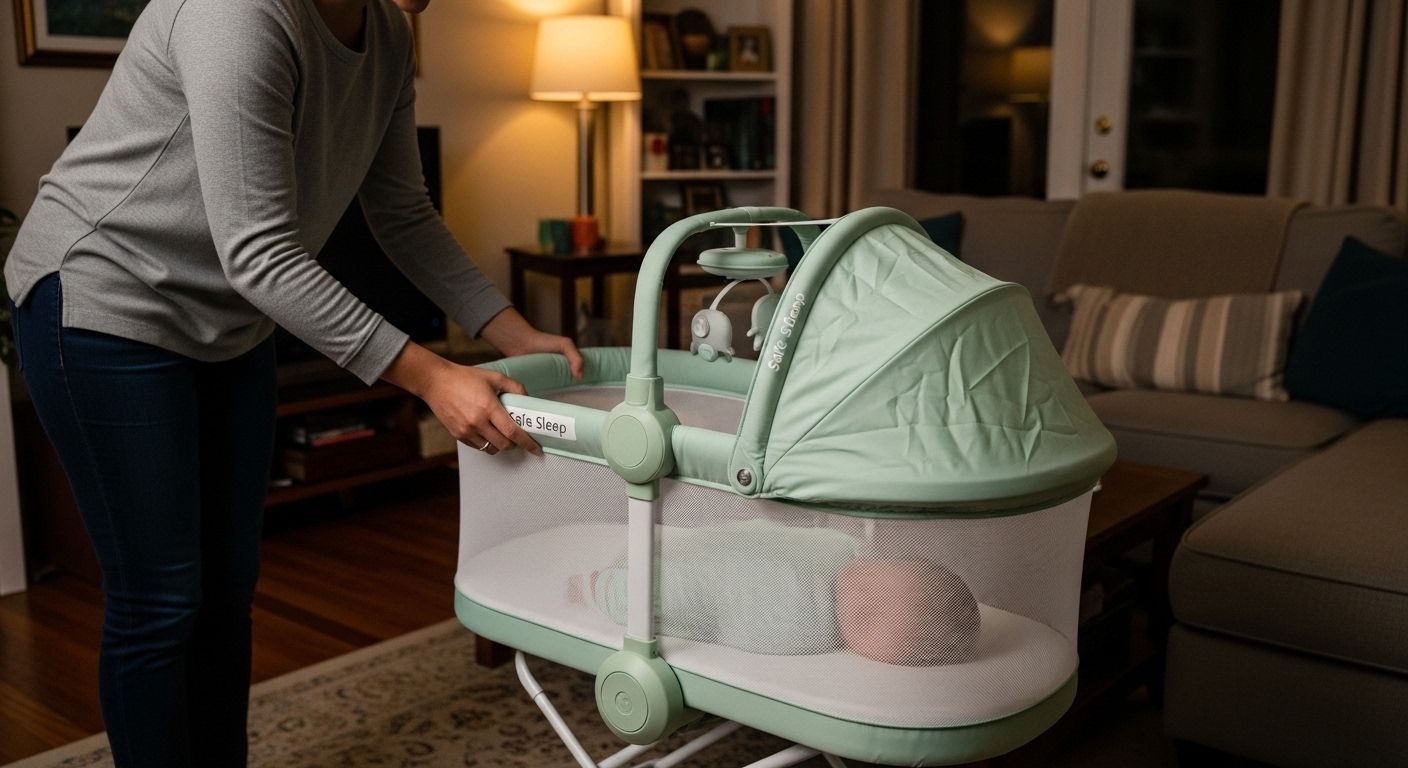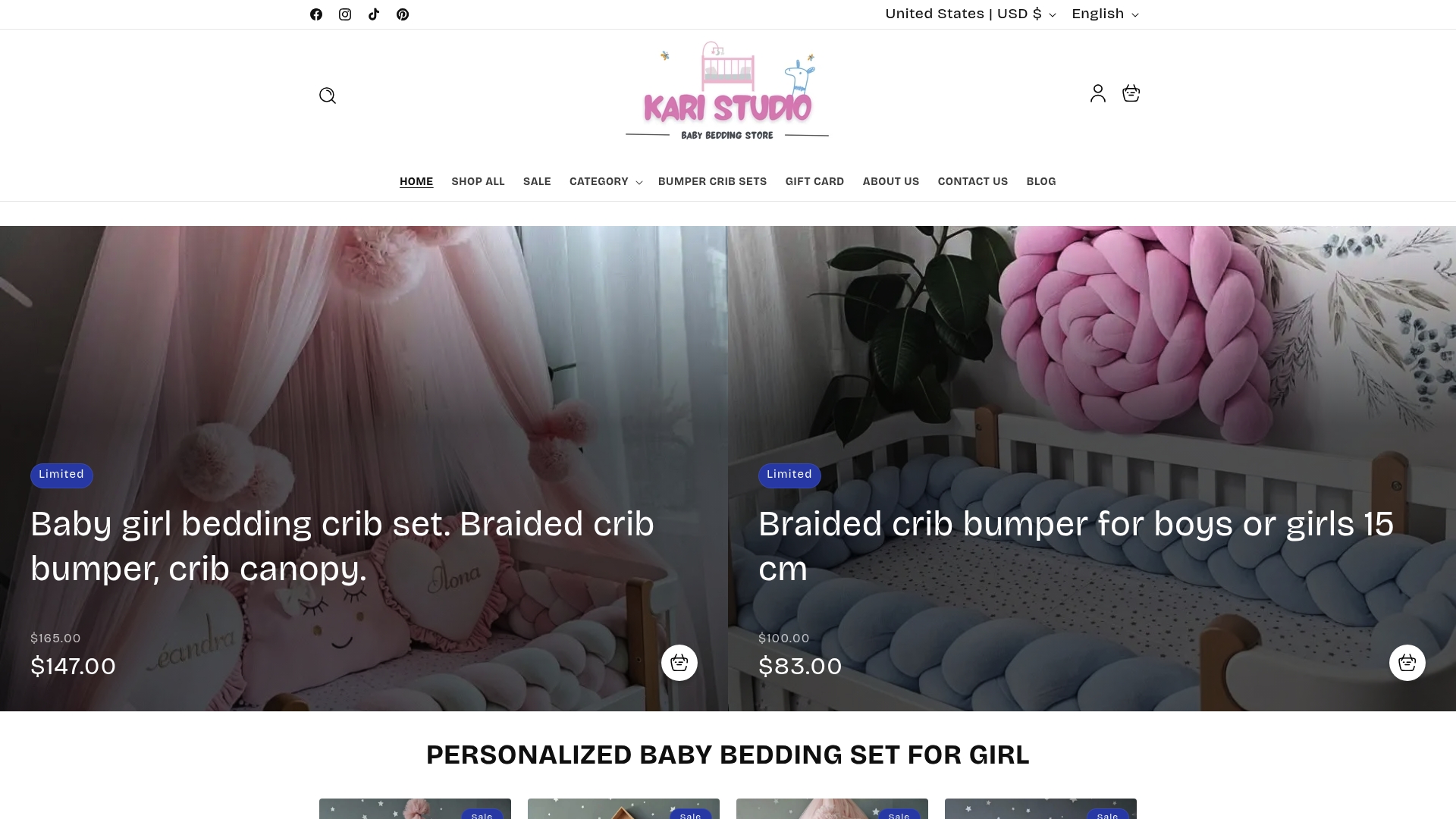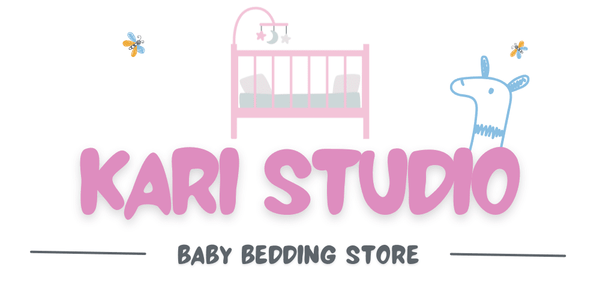
Eine Babywiege sieht vielleicht nur wie ein kleines Bett für Babys aus, doch ihr Design birgt einige große Überraschungen. Studien zeigen, dass die meisten Babywiegen bereits nach 4 bis 6 Monaten zu klein sind . Damit gehören sie zu den kurzlebigsten und dennoch unverzichtbaren Babyausstattungen. Der wahre Wert einer Babywiege liegt nicht in der Nutzungsdauer, sondern darin, wie sie die ersten Monate – Sicherheit für das Baby und Seelenfrieden für die Eltern – prägt.
Inhaltsverzeichnis
- Definition eines Stubenwagens: Was es ist und welche Funktionen es hat
- Die Bedeutung einer Wiege für die Neugeborenenpflege
- Wie Stubenwagen sichere Schlafgewohnheiten unterstützen
- Die Wahl des richtigen Stubenwagens: Wichtige Überlegungen
- Pflege Ihres Stubenwagens: Wartungs- und Sicherheitstipps
Kurze Zusammenfassung
| Wegbringen | Erläuterung |
|---|---|
| Stubenwagen sind für Neugeborene konzipiert. | Diese kompakten Betten schaffen eine sichere Schlafumgebung, die speziell auf Säuglinge in ihren ersten Monaten zugeschnitten ist. |
| Sicherheitsmerkmale sind bei Stubenwagen unerlässlich. | Achten Sie auf atmungsaktive Seiten, feste Matratzen und eine ordnungsgemäße Konstruktion, um die Sicherheit des Säuglings während des Schlafs zu gewährleisten. |
| Stubenwagen fördern die Bindung zu Ihrem Säugling. | Ihre Nähe erleichtert das Füttern, Überwachen und die aufmerksame Pflege und verbessert die Eltern-Kind-Interaktion. |
| Für Stubenwagen gelten bestimmte Gewichts- und Altersgrenzen. | Die meisten sind geeignet, bis das Baby 7 kg wiegt oder sich umdrehen kann, normalerweise im Alter von etwa 4 bis 6 Monaten. |
| Für die Sicherheit ist eine regelmäßige Wartung von entscheidender Bedeutung. | Um eine optimale Schlafumgebung für ihr Baby zu gewährleisten, sollten Eltern die Kleidung regelmäßig auf Verschleiß prüfen und reinigen. |
Definition eines Stubenwagens: Was er ist und welche Funktionen er bietet
Ein Stubenwagen ist ein spezielles kleines Bett, das speziell für Säuglinge in den ersten Lebensmonaten entwickelt wurde. Die US-amerikanische Verbraucherschutzbehörde Consumer Product Safety Commission definiert einen Stubenwagen als kompakte Schlafumgebung, die speziell auf Neugeborene zugeschnitten ist. In der Regel ist er klein und tragbar, sodass Eltern ihr Baby in den kritischen frühen Entwicklungsphasen nah bei sich haben können.
Strukturelle Merkmale von Stubenwagen
Stubenwagen unterscheiden sich deutlich von herkömmlichen Kinderbetten in Größe, Tragbarkeit und Design. Diese Miniatur-Schlafplätze sind bewusst kompakt gehalten und messen in der Regel zwischen 76 und 102 Zentimetern Länge und etwa 38 bis 50 Zentimetern Breite. Zu den wichtigsten Strukturelementen gehören typischerweise:
- Ein stabiler Rahmen oder Ständer, der die Schlaffläche stützt
- Atmungsaktive Seitenwände, oft aus leichten Materialien
- Eine feste, flache Matratze, die speziell für die Sicherheit von Kleinkindern ausgelegt ist
- Mögliche Mobilitätsmerkmale wie Räder oder Schaukelmechanismen
Bei der Konstruktion stehen die Sicherheit des Säuglings und der Komfort der Eltern im Vordergrund. So können die Eltern in unmittelbarer Nähe ihres Neugeborenen bleiben und gleichzeitig eine sichere, geeignete Schlafumgebung schaffen.
Alters- und Gewichtsbeschränkungen
Das Gesundheitsministerium von Michigan empfiehlt die Verwendung von Stubenwagen, bis bestimmte Entwicklungsschritte erreicht sind. Die meisten Stubenwagen sind für Säuglinge bis zu einem Gewicht von 7 kg geeignet oder bis das Baby eine erhöhte Beweglichkeit zeigt, z. B. sich auf Händen und Knien hochstützt oder Anzeichen zeigt, sich umzudrehen.
Normalerweise wachsen Babys im Alter von etwa 4 bis 6 Monaten aus der Wiege heraus. Dann wird der Wechsel zu einem größeren Kinderbett notwendig. Diese relativ kurze Nutzungsdauer spiegelt den speziellen Zweck der Wiege wider: Sie bietet in den ersten Lebensmonaten eines Säuglings einen kompakten, intimen Schlafplatz .
Die Bedeutung einer Babywiege für die Neugeborenenpflege
Stubenwagen spielen eine entscheidende Rolle bei der Schaffung einer sicheren, komfortablen und förderlichen Umgebung für Neugeborene in ihrer empfindlichsten Entwicklungsphase. Forschungsergebnisse der University of North Carolina unterstreichen die Bedeutung spezieller Schlafplätze für Säuglinge, die sowohl die Gesundheit des Säuglings als auch die elterliche Fürsorge fördern.
Vorteile durch Nähe und Bindung
Einer der Hauptvorteile einer Babywiege ist die größere körperliche Nähe zwischen Eltern und Neugeborenem. Im Gegensatz zu größeren Kinderbetten, die sich distanziert anfühlen können, sind Babywiegen so konzipiert, dass Säuglinge in Reichweite bleiben. Diese Nähe erleichtert zahlreiche wichtige Interaktionen:
- Einfachere nächtliche Fütterung und Überwachung
- Schnellere Reaktion auf Notsignale von Säuglingen
- Verbesserte Möglichkeiten für Haut-zu-Haut-Kontakt
- Weniger Angst der Eltern hinsichtlich der Sicherheit ihres Säuglings
Die unmittelbare Erreichbarkeit unterstützt wichtige frühe Bindungsprozesse und hilft den Eltern, einfühlsame Betreuungsmuster zu entwickeln.
Gesundheits- und Sicherheitsaspekte
Stubenwagen bieten erhebliche gesundheitliche Vorteile, da sie eine kontrollierte, geschützte Schlafumgebung schaffen. Das British Medical Journal hebt hervor, dass spezielle Schlafmöglichkeiten wie Beistellbetten die Ergebnisse der Säuglingspflege erheblich verbessern können.
Zu den wichtigsten Sicherheitsmerkmalen gehören atmungsaktive Netzseiten für optimale Luftzirkulation, feste Matratzenoberflächen, die das Erstickungsrisiko verringern, und kompakte Designs, die mögliche Bewegungs- oder Rollgefahren minimieren. Diese Designelemente wurden speziell entwickelt, um die physiologische Entwicklung des Säuglings zu unterstützen und in den empfindlichsten Lebensmonaten eines Babys einen sicheren Schlafplatz zu bieten.
Praktische Vorteile für die moderne Elternschaft
Neben emotionalen und gesundheitlichen Vorteilen bieten Stubenwagen auch bemerkenswerte praktische Vorteile für moderne Eltern. Ihr geringes Gewicht und ihre Tragbarkeit ermöglichen Familien flexible Wohnsituationen, da die Schlafplätze für Babys problemlos zwischen den Zimmern verschoben werden können. Diese Mobilität unterstützt Eltern dabei, ihr Neugeborenes gleichzeitig zu überwachen und gleichzeitig den Haushalt zu führen.
Letztendlich ist eine Wiege mehr als nur eine Schlafunterlage – sie ist ein sorgfältig konzipiertes Stützsystem, das den kritischen Übergang zwischen der Geburt und der selbstständigen Entwicklung des Säuglings überbrückt.
Wie Stubenwagen sichere Schlafgewohnheiten unterstützen
Die American Academy of Pediatrics betont die Bedeutung einer sicheren Schlafumgebung für Säuglinge. Stubenwagen sind daher ein wichtiges Hilfsmittel zur Reduzierung potenzieller Risiken im Zusammenhang mit dem Schlaf von Säuglingen. Diese speziellen Schlafplätze sind sorgfältig konzipiert, um verschiedene Sicherheitsaspekte zu berücksichtigen und empfohlene Schlafgewohnheiten zu unterstützen.
Reduzierung des Risikos des plötzlichen Kindstods (SIDS)
Stubenwagen spielen eine entscheidende Rolle bei der Minimierung des SIDS-Risikos, indem sie eine kontrollierte Schlafumgebung bieten, die den Sicherheitsrichtlinien entspricht. Zu den wichtigsten Schutzfunktionen gehören:
- Feste, flache Schlafflächen, die Erstickungsgefahr verhindern
- Atmungsaktive Seiten, die eine gute Luftzirkulation gewährleisten
- Minimale Einstreu, die das Überhitzungsrisiko verringert
- Eingeschränkter Platz, der ein unbeabsichtigtes Wegrollen verhindert
Das begrenzte und strukturierte Design hilft, gefährliche Schlafpositionen zu vermeiden und gibt Eltern in den schwierigen Nachtstunden ein beruhigendes Gefühl.
Optimale Schlafposition und Unterstützung
Kinderschlafexperten empfehlen spezielle Positionen zur Sicherheit des Säuglings. Stubenwagen sind so konstruiert, dass sie das Schlafen auf dem Rücken ermöglichen, die am häufigsten empfohlene Position zur Reduzierung des SIDS-Risikos. Ihr kompaktes Design ermutigt Säuglinge auf natürliche Weise, auf dem Rücken zu liegen, und spezielle Matratzen bieten gleichmäßigen Halt und verhindern potenzielle Lagerisiken.
Einhaltung der Sicherheitsvorschriften
Moderne Stubenwagen unterliegen strengen Sicherheitsstandards, die spezifische Designanforderungen vorschreiben. Diese Vorschriften stellen sicher, dass jeder Stubenwagen die Mindestsicherheitskriterien erfüllt, darunter:
- Maximal zulässiger Abstand zwischen Strukturkomponenten
- Gewichts- und Altersbeschränkungen
- Materialsicherheitsstandards
- Strukturelle Integritätsprüfung
Durch die Einhaltung dieser strengen Richtlinien schaffen Hersteller Schlafumgebungen, in denen der Schutz des Säuglings im Vordergrund steht. Eltern können darauf vertrauen, dass eine richtig konzipierte Babywiege einen wissenschaftlich fundierten Ansatz bietet, um ihrem Neugeborenen einen sicheren Schlafplatz zu bieten.
Letztendlich sind Stubenwagen mehr als nur eine Schlafunterlage – sie sind sorgfältig konstruierte Sicherheitsvorrichtungen, die Säuglinge in ihren empfindlichsten Entwicklungsphasen schützen sollen.
Die Wahl des richtigen Stubenwagens: Wichtige Überlegungen
Die US-amerikanische Verbraucherschutzkommission (Consumer Product Safety Commission) bietet Eltern wichtige Hinweise für den komplexen Prozess der Auswahl einer geeigneten Babywanne für ihr Neugeborenes. Bei der Auswahl der richtigen Babywanne müssen mehrere Faktoren sorgfältig abgewogen werden, die sich direkt auf die Sicherheit des Säuglings und den Komfort der Eltern auswirken.
Sicherheitsstandards und Zertifizierung
Für Eltern ist es besonders wichtig, dass eine Babywiege den geltenden Sicherheitsstandards entspricht. Moderne Babywiegen müssen strenge gesetzliche Anforderungen erfüllen, die das Wohlbefinden des Säuglings schützen. Eltern sollten Produkte bevorzugen, die folgende Eigenschaften aufweisen:
- Aktuelle Sicherheitszertifizierungen
- Stabile Konstruktion ohne scharfe Kanten
- Sichere Verriegelungsmechanismen für bewegliche Teile
- Einhaltung der Gewichts- und Altersempfehlungen
Das grundlegende Ziel besteht darin, eine Wiege auszuwählen, die in der empfindlichsten Phase der Entwicklung eines Säuglings eine kontrollierte, geschützte Schlafumgebung bietet.
Design- und Funktionsüberlegungen
Über die grundlegende Sicherheit hinaus müssen Eltern praktische Designelemente berücksichtigen, die ihren spezifischen Lebensstil und die Bedürfnisse der Säuglingspflege unterstützen. Wichtige funktionale Aspekte sind:
- Tragbarkeit und Leichtbauweise
- Einfache Montage und Reinigung
- Einstellbare Höheneinstellungen
- Kompatible Matratzenhärte
- Integrierter Speicher oder zusätzliche Funktionen
Die ideale Babywiege vereint Sicherheitsanforderungen mit praktischer Benutzerfreundlichkeit und ermöglicht Eltern so die Schaffung einer effizienten Einrichtung für die Säuglingspflege.
Material- und Konstruktionsqualität
Die verwendeten Materialien haben direkten Einfluss auf Sicherheit, Haltbarkeit und Komfort. Eltern sollten Folgendes sorgfältig prüfen:
- Atmungsaktive Netz- oder Stoffseiten
- Ungiftige, hypoallergene Materialien
- Robuste Rahmenkonstruktion
- Glatte, nahtlose Oberfläche ohne potenzielle Quetschstellen
Letztendlich erfordert die Auswahl der richtigen Wiege umfassende Recherche, eine sorgfältige Bewertung der individuellen Bedürfnisse der Familie und die Verpflichtung, in diesen kritischen ersten Monaten der Entwicklung die höchsten Standards für die Sicherheit des Säuglings einzuhalten.
Pflege Ihres Stubenwagens: Wartungs- und Sicherheitstipps
Die Centers for Disease Control and Prevention betonen die entscheidende Bedeutung der kontinuierlichen Pflege und des sorgfältigen Umgangs mit der Schlafumgebung von Säuglingen. Die richtige Pflege einer Wiege geht über den Kauf hinaus und erfordert kontinuierliche Aufmerksamkeit, um Sicherheit und Funktionalität dauerhaft zu gewährleisten.
Regelmäßige Reinigung und Desinfektion
Eine hygienische Umgebung in der Wiege ist für die Gesundheit des Säuglings unerlässlich. Eltern sollten eine umfassende Reinigungsroutine einführen, die sowohl sichtbare Oberflächen als auch potenzielle versteckte Kontaminationsquellen berücksichtigt:
- Waschen Sie abnehmbare Stoffkomponenten mit einem milden, hypoallergenen Waschmittel.
- Desinfizieren Sie harte Oberflächen mit für Kleinkinder geeigneten Desinfektionstüchern
- Vor dem Zusammenbau vollständig an der Luft trocknen lassen
- Überprüfen Sie während der Reinigung auf Anzeichen von Verschleiß oder Beschädigung
Bei Erkrankungen des Säuglings oder nach einer möglichen Kontamination sollte die Reinigungshäufigkeit erhöht werden, um einen stets sicheren Schlafplatz zu gewährleisten.
Strukturelle Integrität und Verschleißüberwachung
Um potenzielle Sicherheitsrisiken zu vermeiden, ist eine regelmäßige Überprüfung der Strukturkomponenten der Babywanne unerlässlich. Eltern sollten systematische Kontrollen durchführen, die sich auf Folgendes konzentrieren:
- Untersuchung von Gelenkverbindungen und Verriegelungsmechanismen
- Überprüfung auf lose Schrauben oder geschwächte Materialien
- Überprüfung der Passform und Oberflächenintegrität der Matratze
- Beurteilung der Stabilität von Rädern oder Mobilitätskomponenten
Bei Anzeichen einer strukturellen Beeinträchtigung sollte sofort ein Austausch oder eine professionelle Reparatur veranlasst werden, um die optimale Sicherheit des Säuglings zu gewährleisten.
Lagerung und Langzeitkonservierung
Durch die richtige Aufbewahrung bleiben die Qualität und Sicherheit der Wiege für zukünftige Verwendung oder nachfolgende Kinder erhalten. Empfohlene Konservierungsstrategien sind:
- Lagerung in einer sauberen, trockenen Umgebung
- Bewahren Sie die Originalverpackung zum Schutz auf
- Vermeidung extremer Temperaturschwankungen
- Schutz vor direkter Sonneneinstrahlung und Feuchtigkeit
Durch sorgfältige Pflege können Eltern die Lebensdauer ihrer Babywanne deutlich verlängern und gleichzeitig eine sichere Schlafumgebung für ihr Baby gewährleisten. Konsequente Pflege verwandelt die Babywanne von einem einfachen Möbelstück in einen zuverlässigen, sicheren Rückzugsort für Neugeborene.
Nachfolgend finden Sie eine Tabelle mit wichtigen Sicherheits- und Wartungstipps für die Stubenwagenpflege, die es Eltern leichter machen, für eine sichere und saubere Umgebung für ihr Baby zu sorgen.
| Sicherheits-/Wartungsbereich | Empfohlene Aktion | Frequenz/Hinweise |
|---|---|---|
| Reinigung (Stoffteile) | Mit mildem, hypoallergenem Waschmittel waschen | Wöchentlich oder nach Bedarf |
| Reinigung (harte Oberflächen) | Mit einem für Kleinkinder geeigneten Desinfektionsmittel abwischen | Wöchentlich oder nach Kontamination |
| Strukturprüfung | Überprüfen Sie Verbindungen, Schrauben und Schlösser | Wöchentlich, insbesondere nach dem Wiederaufbau oder Umzug |
| Matratzeninspektion | Gewährleisten Sie einen festen, passgenauen Sitz ohne Oberflächenschäden | Bei jeder Reinigung |
| Rad-/Mobilitätsprüfung | Bewerten Sie Stabilität und Funktion | Bei Bedarf, insbesondere nach einem Umzug |
| Lagerung | Trocken lagern, Hitze/Sonne vermeiden, Originalverpackung verwenden | Bei Nichtgebrauch oder zwischen Kindern |

Geben Sie Ihrem Baby den Schlaf, den es verdient – mit dem richtigen Kinderzimmerzubehör
Sind Sie gestresst, weil Sie keine sichere und bequeme Schlaflösung für Ihr Neugeborenes finden? Wie Sie in unserem Artikel erfahren haben, ist die Schaffung einer sicheren Umgebung mit der richtigen Babywanne und dem richtigen Zubehör unerlässlich für die Gesundheit Ihres Babys und Ihre innere Ruhe. Eltern sorgen sich um Sicherheit, Komfort und darum, ihr Kleines in den ersten schwierigen Monaten in der Nähe zu haben. Die richtigen Produkte tragen entscheidend zu erholsamen Nächten und reibungsloseren Tagesabläufen bei.

Sorgen Sie für einen besseren Schlaf Ihres Babys mit den Baby-Essentials von Kari Studio , die für maximale Sicherheit und höchsten Komfort entwickelt wurden. Von weichen Bettumrandungen bis hin zu sorgfältig gefertigten Accessoires finden Sie Optionen, die zu Ihrem Lebensstil und Ihrem Kinderzimmer passen. Entdecken Sie noch heute unsere Kollektion und machen Sie den nächsten Schritt zu einem sichereren, gemütlicheren Kinderzimmer, damit Sie eine engere Bindung zu Ihrem Kleinen aufbauen und vom ersten Tag an beruhigt sein können.
Häufig gestellte Fragen
Was ist ein Stubenwagen?
Ein Stubenwagen ist ein kleiner, tragbarer Schlafplatz, der speziell für Säuglinge in ihren ersten Lebensmonaten entwickelt wurde. Er verfügt in der Regel über atmungsaktive Wände, eine feste Matratze und ein kompaktes Design, um Sicherheit und Komfort für die Eltern zu gewährleisten.
Wie lange kann ein Säugling eine Wiege benutzen?
Die meisten Stubenwagen sind für Säuglinge bis zu einem Gewicht von 7 kg geeignet oder bis das Baby beginnt, sich hochzudrücken oder sich umzudrehen, was normalerweise im Alter von etwa 4 bis 6 Monaten der Fall ist. Danach empfiehlt sich der Wechsel zu einem größeren Kinderbett.
Was sind die wichtigsten Sicherheitsmerkmale eines Stubenwagens?
Zu den wichtigsten Sicherheitsmerkmalen einer Babywiege gehören eine feste, flache Matratze zum Schutz vor Erstickung, atmungsaktive Netzseiten für die Luftzirkulation, ein stabiler Rahmen und minimale Bettdecke zur Vermeidung von Überhitzung. Diese Elemente tragen zu einer sicheren Schlafumgebung für Säuglinge bei.
Wie sollte ich eine Wiege pflegen und reinigen?
Zur regelmäßigen Pflege gehört das Waschen abnehmbarer Stoffteile mit einem milden Reinigungsmittel, das Desinfizieren harter Oberflächen und die Überprüfung der strukturellen Integrität auf Abnutzungserscheinungen. Wenn Sie die Wiege sauber und in gutem Zustand halten, ist Ihr Baby ein sicherer Schlafplatz.

